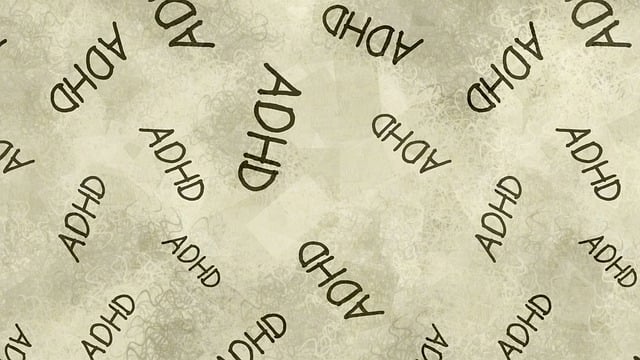Emotional intelligence (EI) is a vital skill for children, linked to better stress management, academic performance, and relationships. Early intervention through therapy, incorporating mindfulness and compassion cultivation, can significantly enhance EI in kids with panic disorder and anxiety attacks. These practices foster self-awareness, emotional regulation, and resilience against anxiety. Therapy for Children Panic Disorder and Anxiety Attacks combines strategies like cognitive-behavioral therapy (CBT), mindfulness exercises, and open communication to help children understand and manage their emotions effectively. CBT identifies negative thought patterns, reduces anxiety, and prevents panic attacks, while stress reduction methods provide immediate relief and long-term emotional well-being.
Emotional intelligence (EI) is a powerful tool for children’s holistic development, especially in managing anxiety and panic disorders. This article explores the profound impact of EI on young minds, offering insights into how it can be harnessed to mitigate symptoms of anxiety attacks. We delve into strategies tailored for children with panic disorder, highlighting the role of therapy as a game-changer. By understanding emotional cues and learning effective coping mechanisms, kids can navigate their feelings, fostering resilience and enhancing overall well-being.
- Understanding Emotional Intelligence and Its Impact on Children
- Identifying and Managing Panic Attacks and Anxiety in Kids
- Strategies to Foster Emotional Intelligence in Children with Panic Disorder
Understanding Emotional Intelligence and Its Impact on Children

Emotional intelligence (EI) is a child’s ability to recognize, understand, and manage their own emotions, as well as empathize with others. This skill set is vital for navigating social interactions and can significantly impact a child’s emotional well-being. Research shows that children with higher EI are better equipped to handle stress, have improved academic performance, and exhibit stronger relationships with peers and adults. They’re more likely to approach challenges calmly and constructively, which can be particularly beneficial in managing conditions like panic disorder and anxiety attacks.
Early intervention through therapy for children with panic disorder and anxiety attacks can play a pivotal role in fostering emotional intelligence. Techniques such as mindfulness meditation and compassion cultivation practices have been shown to help young individuals gain insight into their feelings and learn healthy coping mechanisms. Engaging in stress management workshops within a supportive environment allows children to develop self-awareness, regulate their emotions effectively, and build resilience against anxiety disorders.
Identifying and Managing Panic Attacks and Anxiety in Kids

Many children experience panic attacks and anxiety disorders, which can significantly impact their daily lives. Identifying and managing these issues early on is crucial for their overall mental wellness. Therapy for Children with Panic Disorder and Anxiety Attacks involves a combination of strategies to help kids understand and cope with their emotions. Mental Wellness Coaching Programs Development often incorporates compassion cultivation practices, teaching children mindfulness techniques to recognize and manage panic symptoms.
By participating in these programs, children learn to identify the physical and mental cues that signal anxiety or a potential panic attack. Through therapy, they develop effective coping mechanisms such as deep breathing exercises, progressive muscle relaxation, and positive self-talk. These tools enable kids to gain a sense of control over their emotions, reducing the intensity and frequency of anxiety episodes. Additionally, compassionate approaches foster an environment of understanding, allowing children to feel supported and less alone in their struggle.
Strategies to Foster Emotional Intelligence in Children with Panic Disorder

Teaching emotional intelligence to children with panic disorder can be a transformative process. Starting early with strategies like mindfulness exercises and cognitive-behavioral therapy (CBT) can help these young individuals understand and manage their emotions effectively. CBT for children with panic disorder focuses on identifying and changing negative thought patterns, which in turn reduces anxiety and triggers for panic attacks. This form of therapy encourages kids to challenge their fears and learn coping mechanisms tailored to their unique needs.
Building resilience is another crucial aspect of fostering emotional intelligence in this demographic. Encouraging open communication with a healthcare provider culturally competent in pediatric mental health can create a safe space for children to express their feelings. By integrating stress reduction methods, such as deep breathing exercises and progressive muscle relaxation, kids gain practical tools to calm themselves during anxious moments. These techniques not only aid in the short term but also contribute to long-term emotional well-being and resilience.
Emotional intelligence (EI) is a vital tool for children’s overall well-being, especially those dealing with panic disorder and anxiety attacks. By understanding EI and implementing strategies such as identifying and managing these attacks, professionals can help foster a healthier emotional landscape in young individuals. Therapy for Children Panic Disorder and Anxiety Attacks should focus on developing coping mechanisms and enhancing self-awareness, ultimately empowering children to navigate their emotions effectively.














